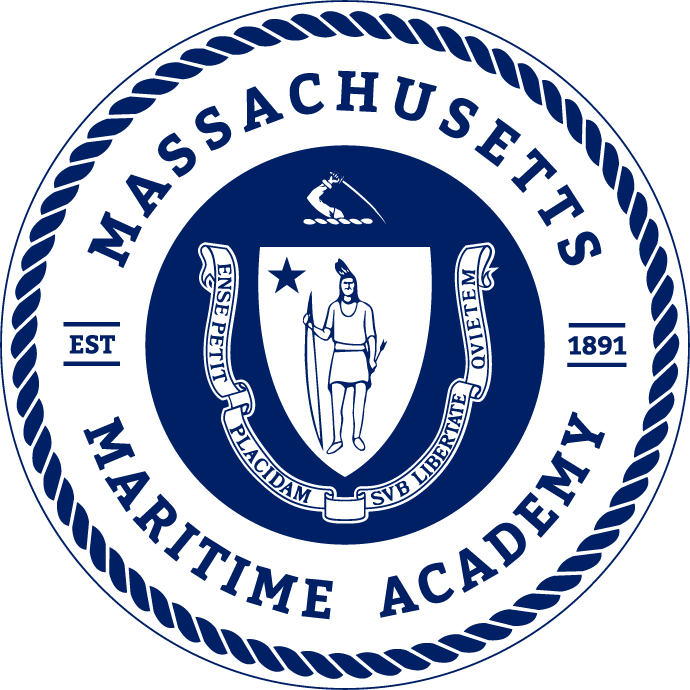Course Description
Lays the foundation for future marine engineering courses. It covers the construction, operation, maintenance, and repair of piping systems, fittings, joints, packing, and valves including basic control valves. Basic pressure, temperature, and level measurements and instruments are also discussed. [Lab time required]
This course consists of three 1-hour classes a week for a semester, six 3-hour labs with practical assessments, and a comprehensive final exam.
Entrance requirements
- Comprehend reading assignments at the post secondary level
- Perform basic arithmetic problems
- Ability to follow a fluid piping system drawing
- Demonstrate knowledge of the main steam and water cycle
- Demonstrate knowledge of the fuel oil service system
- Demonstrate knowledge of the lube oil service system
STCW Objectives
Demonstrate knowledge and understanding of the following STCW elements:
- OICEW-A4.1 Basic construction and operation principles of heat exchanges
- OICEW-A4.1 Basic construction and operation principles of pumps
- OICEW-A5.2 Operation of pumping systems
- OICEW-A5.2 Routine pumping operations
- OICEW-C1.4 Methods for carrying out safe emergency/temporary repairs
- OICEW-C1.7 Use of various types of sealants and packings
- OICEW-C2.2 Appropriate basic mechanical knowledge and skills
- OICEW-C2.5 Design characteristics and selection of materials in construction of equipment
- OICEW-C2.6 Interpretation of machinery drawings and handbooks
- ABE-A5.1 Basic knowledge of the function of auxiliary machinery
- ABE-A5.1 Basic knowledge of the operation of auxiliary machinery
- ABE-A6.1 Knowledge of oil transfer operations
- ABE-A6.1 Preparations for fueling and transfer operations
- ABE-A6.1 Procedures for connecting and disconnecting fueling and transfer hoses
- ABE-A6.1 Procedures for securing from fueling and transfer operations
- ABE-A6.1 Procedures relating to incidents that may arise during fueling or transferring operation
- ABE-A8.1 Safe operation of hoists and lifting equipment
- ABE-A8.1 Safe operation of valves and pumps
- ABE-B1.1 Ability to use lubrication materials and equipment
Demonstrate proficiency in the following skills:
- ABE-1-6A Assist with fuel oil transfer
- OICEW-8-2E Overhaul valve
- OICEW-8E2A Make emergency repairs
- RFPEW-1H2C Shift and clean a basket-type duplex strainer
Topics
- Steam Cycle Review
- Fasteners and Hardware
- Piping Identification
- Pipe Connection Methods
- Piping and Instrumentation Diagrams
- Valve Functions and Basic Parts
- Safety Valves and Relief Valves
- Pneumatically Operated Valves
- Steam Traps
- Filters and Strainers
- Temperature Measurements
- Pressure Measurements
- Level Measurements
- Heat Exchangers
- Non Positive Displacement Pump Overview
- Positive Displacement Pump Overview
- Process Control
Other objectives
- Calculate the dimensions of a section of pipe or tubing
- Explain the construction techniques and materials used in a section of pipe or tube
- Identify all pipe fittings used in a fluid piping system
- Describe the types and purpose of various flange connections used in a high pressure fluid piping system
- Identify the various types of expansion joints used in a fluid piping system
- Discuss the various operational problems associated with fluid piping systems
- Identify the various materials used in packing and gasket sealing systems
- Calculate the size of moving shaft packing sizes
- Discuss the importance of the “Lock out-Tag out” safety procedure
- Explain the various methods of renewing fixed gasket joints and the safety concerns involved
- Calculate pressure readings in both the gage and absolute scales
- Calculate pressure readings based on the height of various liquids
- Identify the various pressure measuring devices
- Calculate temperature readings in both Fahrenheit and Celsius scales
- Discuss the difference between thermometers and pyrometers
- Describe the methods of liquid level measurements. Deep or Ullage soundings
- Identify the various types of valves used in a fluid piping system. Demonstrate use of piping symbols on system drawings to identify these valves
- Discuss the construction differences in valves used in low and high pressure piping systems
- Discuss the troubleshooting of problems associated with valves
- Describe the operation of a spring loaded pressure regulating valve
- Demonstrate knowledge of the purpose of the basic parts of a spring loaded pressure reducing valve
- Discuss operational problems associated with the failure of various parts of a spring loaded pressure reducing valve
- Describe the use of diaphragm control valves in a pneumatic piping system
- Describe the operation of a pneumatically operated pressure regulating valve
- Discuss the features of a diaphragm control valve in regards to whether it “Fails-Open or Fails Closed.”
